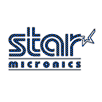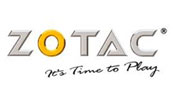 |
|
|
|
|
| Cuisines | Herbal | Spice | Curry | Yeast | Recipe | ||||||
|
Baker's Yeast Baker's yeast is the common name for the strains of yeast commonly used as a leavening agent in baking bread and bakery products, where it converts the fermentable sugars present in the dough into carbon dioxide and ethanol. Baker's yeast is of the species Saccharomyces cerevisiae, which is the same species commonly used in alcoholic fermentation, and so is also called brewer's yeast. Baker's yeast is also a one celled microorganism growing around us and on us. The use of steamed or boiled potatoes, water from potato boiling, or sugar in a bread dough provides food for the growth of yeasts, however, too much sugar will dehydrate them. Yeast growth is inhibited by both salt and sugar, but more so with salt than sugar. Fats such as butter or eggs slow down yeast growth, however others say the effect of fat on dough remains unclear, presenting evidence that small amounts of fat are beneficial for baked bread volume. Saccharomyces exiguus (also known as S. minor) is a wild yeast found on plants, fruits, and grains that is occasionally used for baking; it is not, however, generally used in a pure form, but comes from being propagated in a sourdough starter. Types of baker's yeast Baker's yeast is available in a number of different forms, the main differences being the moisture contents. Though each version has certain advantages over the others, the choice of which form to use is largely a question of the requirements of the recipe at hand and the training of the cook preparing it. Dry yeast forms are good choices for longer-term storage, often lasting several months at room temperatures without significant loss of viability. With occasional allowances for liquid content and temperature, the different forms of commercial yeast are generally considered interchangeable.
For most commercial uses, yeast of any form is packaged in bulk (blocks or freezer bags for fresh yeast; vacuum-packed brick bags for dry or instant); however, yeast for home use is often packaged in pre-measured doses, either small squares for compressed yeast or sealed packets for dry or instant. For active dry and instant yeast, a single dose (reckoned for the average bread recipe of between 500 g and 1000 g of dough) is generally about 2.5 tsp (~12 mL) or about 7 g (1/4 ounce), though comparatively lesser amounts are used when the yeast is used in a pre-ferment. A yeast flavor in the baked bread is generally not noticeable when the bakers' percent of added yeast is less than 2.5. Use in researchBecause it is readily available and easy to culture, baker's yeast has long been used in chemical, biological, and genetic research. In 1996, after 6 years of work, S. cerevisiae became the first eukaryote to have its entire genome sequenced. It has over 12 million base pairs and around 6000 genes. Since then it has remained on the forefront of genetic research. For example, most of our knowledge of the cell division cycle was worked out from experiments with yeast. Baker's yeast contains enzymes which can reduce a carbonyl group into a hydroxyl group in fairly high yield, thus making it a useful bio-reagent in chemical syntheses. It is known to reduce organometallic carbonyl compounds in very high yield. Baker's yeast can also be used to produce ethanol via fermentation for use in chemical synthesis, although doing so in some places requires permits. |











